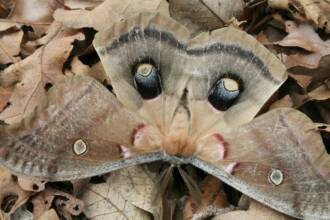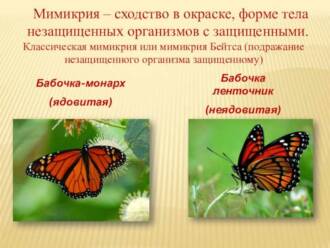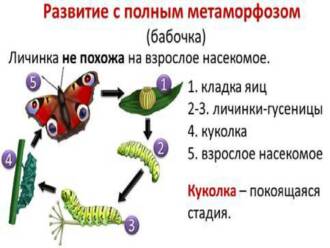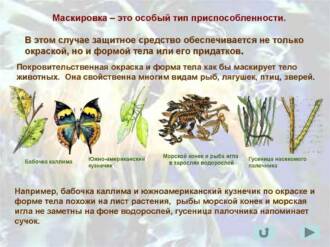
Butterflies are amazing creatures that have evolved and adapted to different environments over millions of years. Their beautiful wings and varied colors are not only for show, but are also the result of an evolutionary process. In this article, we will look at some of the secrets of how butterflies have adapted to their environment and developed their unique characteristics.
One of the important adaptations of butterflies is their ability to camouflage. Many species of butterflies have wings with patterns and colors that allow them to blend in with their surroundings. This helps them avoid predators and remain undetected. Butterflies can also change their color depending on the time of year and environmental conditions, which allows them to survive and reproduce more successfully.
Another amazing adaptation of butterflies is their ability to fly. They have light and strong wings that allow them to maneuver and fly long distances. Butterflies also use their antennae to navigate in space and search for food. They can fly to high altitudes and travel long distances, which helps them find new food sources and breeding sites.
Butterflies evolve in an ongoing process that continues to this day. They continually adapt to changes in their environment and develop new characteristics. Studying these adaptations and the secrets of butterfly evolution helps us better understand the mechanisms of natural selection and the diversity of living organisms on planet Earth.
Amazing variety of butterflies

Butterflies are one of the most diverse and beautiful groups of insects. They have a huge variety of shapes, colors and sizes. There are more than 180,000 known species of butterflies in the world, each of which is unique and amazing in its own way.
The colors of butterflies can be very diverse: from delicate pastel shades to a bright and rich palette. Many species of butterflies have camouflage colors that help them hide from predators or pretend to be a leaf or flower. There are also species of butterflies with bright colors, which serve as a signal that they are poisonous or dangerous to predators.
Butterflies differ not only in color, but also in the shape of their wings. Some species have wide wings that allow them to fly quickly and maneuverably. Other species have narrow and long wings, which allow them to fly long distances and make long migrations.
Most butterflies have paired wings, but there are also species in which the hind wings are absent or have a greatly reduced size. Such species usually have a special forewing structure that allows them to fly and move around using their forewings.
Butterflies also differ in size. There are species whose dimensions do not exceed a few millimeters, as well as species whose dimensions reach several tens of centimeters. Small sized butterflies usually live on the forest floor or on plants, while larger sized butterflies often live in tropical forests and gardens.
Thus, the amazing diversity of butterflies amazes with its beauty and uniqueness. Each species of butterflies is a real work of nature, which attracts the attention and admiration of people from all over the world.
How butterflies adapt to their environment

Butterflies are some of the most colorful and beautiful creatures on the planet. Their wings are decorated with a variety of patterns and bright colors that make them truly unique. But these bright colors also play an important role in their survival.
One of the main strategies used by butterflies to survive is mimicry. They may imitate other animals or plants in their environment to escape predators. For example, some species of butterflies have wings that look a lot like leaves or tree bark. This allows them to hide and blend into their surroundings, making them virtually invisible to their enemies.
In addition, butterflies also use their beautiful wings to attract mates. They have special patterns and colors that serve as signals to other individuals. For example, some butterflies have bright red wings, which attract the attention of females and indicate their readiness to reproduce.
The environment also influences the shape and size of butterflies' wings. In some areas where desert terrain predominates, butterflies have large and broad wings to make the most of every breeze for movement. At the same time, in forested areas, butterflies have smaller and more graceful wings to better maneuver between trees.
In general, butterflies are true miracles of evolution. Their ability to adapt to their environment and use their wings to their advantage makes them one of the most successful and beautiful creatures on Earth.
The role of color in the adaptation of butterflies

Coloration is one of the most important adaptations of butterflies to their environment. It performs several functions and plays an essential role in the survival and reproduction of these insects.
Protection from predators. The coloring of butterflies can help them camouflage and hide from the surrounding nature. Many species of butterflies have similar colors to surrounding objects, such as leaves or tree bark. This allows them to avoid detection by predators and increase their chances of survival.
Communication and reproduction. The coloration of butterflies can also serve as a signal to breeding partners. In some species, males are brighter and more saturated in color, which attracts the attention of females and helps them choose a suitable partner for breeding.
Resistance to environmental conditions. The coloration of butterflies may also help them survive in certain environmental conditions. For example, in some species of butterflies, coloration may help them regulate their body temperature. Dark shades help absorb more solar energy, while light shades help reflect excess heat.
Imitation and repelling of predators. Some butterfly species have colors that mimic species that are poisonous or dangerous to predators. This helps them ward off predators and stay safe. This mimicry protects the butterflies, making them less attractive to potential predators.
In general, coloration plays an important role in the adaptation of butterflies to their environment. It helps them survive, reproduce, defend themselves and adapt to different environmental conditions.
Mimicry: how butterflies camouflage themselves
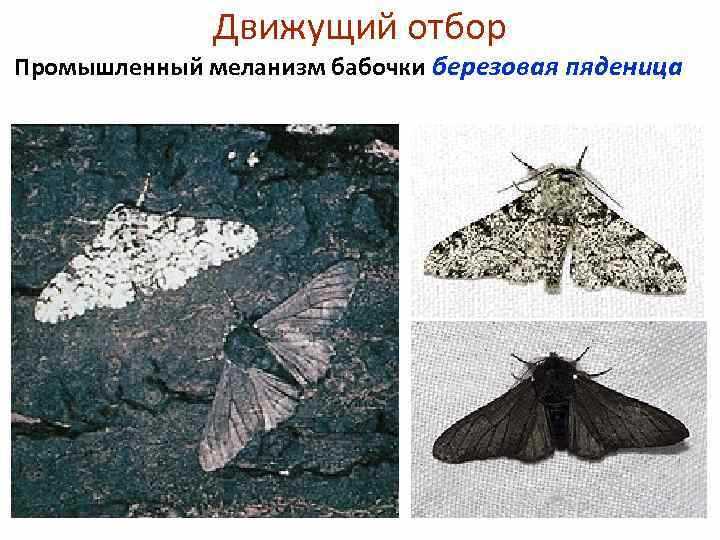
Mimicry is the ability of organisms to disguise themselves as other objects or environments to remain undetected by predators or prey. Butterflies are masters of mimicry, using a variety of techniques to hide and survive.
One of the most common types of mimicry in butterflies is camouflage under leaves or tree bark. They develop special wing colors and textures that allow them to almost blend in with the surrounding vegetation. Thanks to this, predators cannot notice the butterfly and it can spend its time quietly until danger comes.
Another example of mimicry in butterflies is taking on the appearance of other dangerous or repulsive species. Some butterflies have colors similar to brightly colored and poisonous insects. Thus, they create the illusion of danger and scare away predators.
Butterflies can also use mimicry to make themselves appear larger and more dangerous than they actually are. They develop large and bright spots on their wings that can resemble the eyes of predators. This can distract the enemy from the butterfly's real weak spot and give it a chance to escape.
Thus, mimicry is an important adaptive mechanism in butterflies and allows them to survive in environments where predators hunt them. These strategies of camouflage and deception allow butterflies to maintain their lives and continue species diversity in nature.
Evolution of butterfly sizes and shapes

Butterflies are one of the most colorful insects that have adapted to their environment over millions of years. One of the important characteristics that butterflies evolve is their size and shape. These factors play an important role in their ability to survive and reproduce.
The evolution of butterfly size is influenced by various factors, including food availability, competition with other species, and predators. Some butterflies grow larger to have a better chance of surviving competition for food or protecting themselves from predators. Others, on the contrary, decrease in size in order to move more easily in narrow spaces or penetrate flowers to feed on nectar.
The shape of butterflies also evolves depending on their lifestyle and environment. Some butterflies have long and narrow wings, which helps them fly quickly and evade predators. Others have wide and rounded wings that allow them to fly slowly and smoothly, which is useful in foraging for food and attracting mates.
One of the most impressive examples of the evolution of size and shape in butterflies is mimicry and crypticity. Some species of butterflies take on the colors and shapes of leaves or branches to be invisible to predators. Other types of butterflies have bright and contrasting colors to warn predators that they are poisonous or unpalatable.
Thus, the evolution of butterfly sizes and shapes is a complex and unique process that allows them to survive and thrive in a variety of environments. Studying these adaptations allows us to better understand the mechanisms of evolution and the influence of the environment on the development of living organisms.
The impact of climate change on the evolution of butterflies
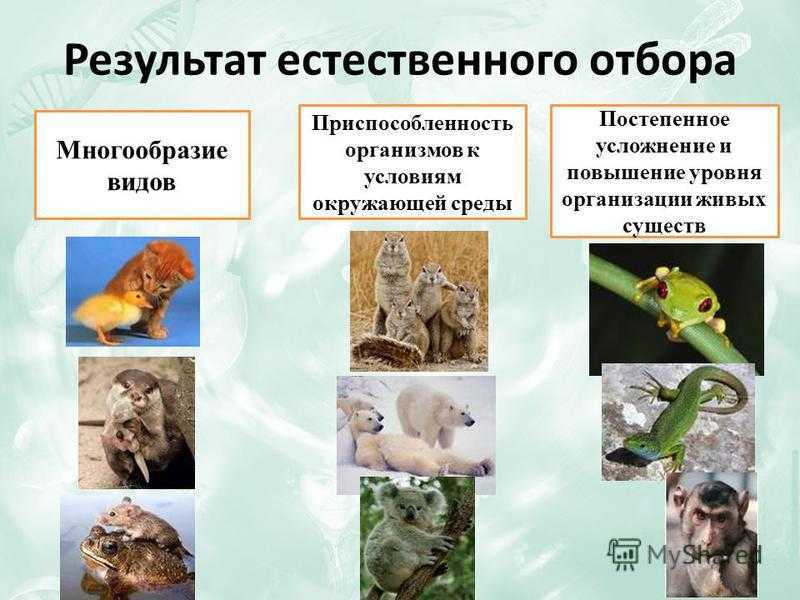
Climate change has a huge impact on the evolution of butterflies. In the context of global warming and climate change, butterflies are forced to adapt to new environmental conditions. This occurs through changes in their physiology, behavior and migratory patterns.
One of the main strategies for butterflies to adapt to climate change is to change the timing of their development. Some species of butterflies shorten their life cycle in order to have time to reproduce in new conditions. They may reproduce earlier or later to synchronize with changes in the plant cycle that provide food for their caterpillars.
Another adaptation strategy is to change migration routes. Some butterflies migrate to more northern or higher mountain areas to escape unfavorable conditions in their usual habitats. This allows them to maintain access to food and helps maintain their populations in new conditions.
However, not all butterfly species are able to adapt to rapid climate change. Some species may be unprepared for new conditions and face the threat of extinction. Therefore, understanding the impact of climate change on butterflies is important for their conservation and conservation.

